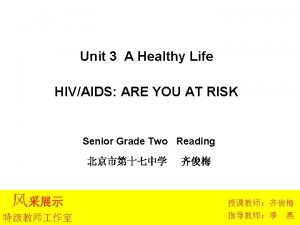English Reading read most words quickly and accurately

- Slides: 1

English Reading: • read most words quickly and accurately, without overt sounding and blending, when they have been frequently encountered. • discussing the sequence of events in books and how items of information are related. • discussing and clarifying the meanings of words, linking new meanings to known vocabulary • predicting what might happen on the basis of what has been read so far. Art and DT Design purposeful, functional, appealing products for themselves and other users based on design criteria. Evaluate their ideas and products against design criteria Select from and use a range of tools and equipment to perform practical tasks [for example, cutting, shaping, joining and finishing. To develop a wide range of art and design techniques in using colour, pattern, texture, line, shape, form and space. • • Writing: • learning new ways of spelling phonemes for which one or more spellings are already known, and learn some words with each spelling, including a few common homophones. • write capital letters and digits of the correct size, orientation and relationship to one another and to lower case letters • use spacing between words that reflects the size of the letters. Composition: • Writing narratives, real events, poetry and for different purposes. • Consider what they are going to write before beginning. • Make simple additions revisions and corrections to their own writing. Unicorn Class – 18/19 Terrific Toys PE • Spelling: the sound ‘u’ spelt with ‘o’, ‘ee’ spelt with ‘ey’, the ‘o’ sound spelt with ‘a’ after ‘w’ and ‘qu’, the stressed ‘er’ spelt ‘or’ after ‘w’ and the sound ‘or’ spelt ‘ar’ after ‘w’, the sound ‘zh’ spelt ‘s’, suffixes –ment, -ness, -ful, -less, -ly and words ending in –tion and year 2 common exception words. • Dreams and goals. I can explain some of the ways I worked cooperatively in my group to create the end product and I can express how it felt to be working as part of this group Celebrating difference. I can identify some ways in which my friend is different and can tell you why I value this difference about him/her. Science • • • Identify and name everyday materials. Identify different uses of everyday materials. Record their observations. Demonstrate and explain how shapes of objects made from some materials can be changed. Explain what recycling means • • Use technology purposefully to create, organise, store, manipulate and retrieve digital content. Recognise common uses of information technology beyond school. RE Sacraments: • Pupils will be able to say what a Sacrament is using more than one idea. • Pupils will be able to name the 7 Sacraments and give at one symbol from three of them. • Pupils will be able to say at least simply what the meaning of some of those are. • Pupils will be able to connect some of the reasons Catholics give for going to mass with the words of Jesus. • Pupils will be able to ask meaningful questions about going to mass and the roles of people involved. Numeracy Vocabulary, grammar and punctuation: • Sentences with different forms, expanded noun phrases, past and present tenses, subordination and co-ordination. PSHE Computing • • Master basic movement including running, jumping, throwing and catching, as well as developing balance, agility and co-ordination, and begin to apply these in a range of activities. Participate in team games, developing simple tactics for attacking and defending. Perform dances using simple movement games. Music • • listen with concentration and understanding to a range of high-quality live and recorded music. experiment with, create, select and combine sounds using the inter-related dimensions of music. Topic • • • Explain what they know about toys today. Explain how we can find out about the past. Describe features of different toys. Recognise old and new toys. Use words relating to the passing of time. • • Identify and describe the properties of 2 D shapes, including the number of sides and line symmetry in a vertical line. Identify and describe the properties of 3 D shapes, including the number of edges, vertices and faces. Identify 2 D shapes on the surface of 3 D shapes. Compare and sort common 2 D and 3 D shapes and everyday objects. Order and arrange combinations of mathematical objects in patterns and sequences. Use mathematical vocabulary to describe position, direction and movement, including movement in a straight line and distinguishing between rotation as a turn and in terms of right angles for quarter, half and three quarter turns. Recognise, find, name and write fractions 1/3, ¼, 2/4 and ¾ of a length, shape, set of objects or quantity. Write simple fractions e. g. ½ of 6 = 3 Recognise the equivalence of 2/4 and ½.

